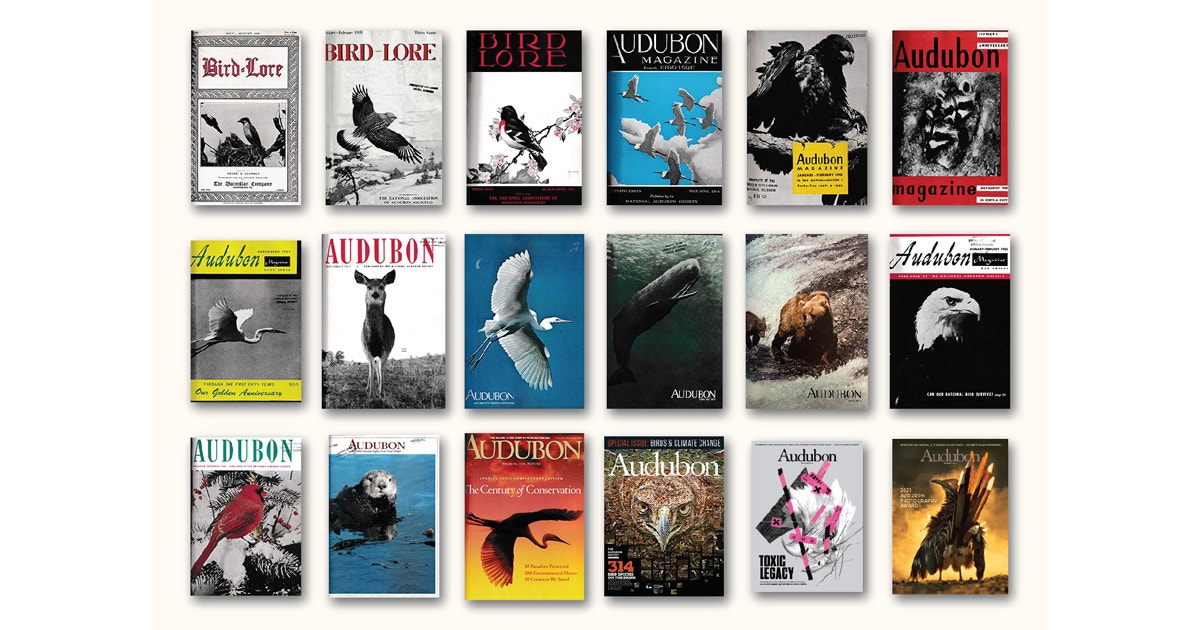Tucked away in the art room of the National Audubon Society’s New York City office lies a treasure trove: nearly every single issue of the organization’s magazine ever published, bound in thick volumes. Before I began my editorial fellowship in January 2024, I didn’t know Audubon magazine dated all the way back to 1899, when it was first printed under the name Bird-Lore. Soon, I would become somewhat of an expert on these records.
My fellowship turned out to coincide with the magazine’s 125th anniversary. In my first week, I sat with the editorial team flipping through old issues, trying to find themes and interesting angles to celebrate the milestone. We mused about antiquated birding advice, were charmed by endearing old letters from readers, and learned how pivotal moments in history shaped the magazine’s focus.
It was an eye-opening experience, especially as an early-career journalist who’s long been fascinated with birding culture. Birders, in some ways, have changed little since the early 20th century. Many things felt familiar: Jokes about the personality quirks of birds such as the Ruffed Grouse. Spirited debates about photography ethics. The awe of seeing a Northern Gannet colony. And yet, so much about the world has changed, whether the technology at our fingertips or our growing footprint on our environment.
As our team formulated a plan to capture this body of work, I took on the task of cataloging each issue’s cover—its subject, photographer or illustrator, location, and more. With no digital archive of the magazine prior to the mid-2000s, our idea was to get a snapshot of what was deemed cover-worthy through the years. A straightforward exercise. We thought it might take a couple of days.
Yet starting with the very first issue of Bird-Lore, time began to slip away. After a week, when I reached the 1950s (or was it the ‘60s?) the decades blurred, then shape shifted. Black-and-white covers burst into full color. Dispatches from yards and local parks became longer features about habitat destruction and conservation—first mostly across the country, then around the world.
More than 700 entries later, we not only had a database of Audubon’s covers, but I also came away with a deeper understanding of how environmental journalism and the broader conservation movement has evolved. Throughout, birds bonded people together, inspired art, and compelled us to think critically about our connection to the planet. Here’s what we found.

